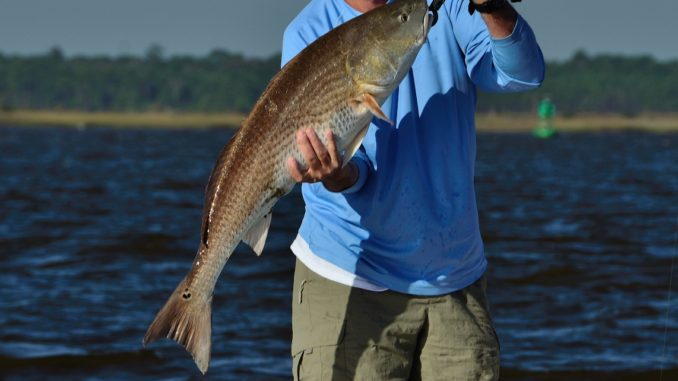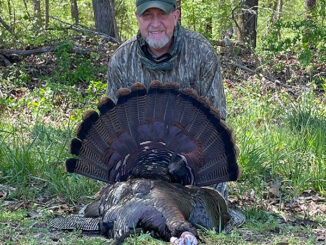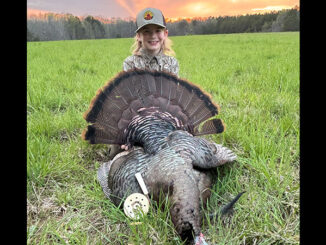
Targeting giant redfish is an expedition many anglers look forward to every year. Where and when else can you catch 50-pound fish in inshore waters? Even though these fish are exceptionally fun to catch, they are old critters and need special care if the fishery is to be sustained.
Redfish are very long-lived fish. They have been documented in excess of 50 years in research done since 1980. It takes approximately 15 to 20 years for a red drum to reach 40 inches. During the first five years of life, growth is very rapid, but redfish can become capable of reproducing in that time span. Consequently, the reproductive age coincides with the upper end of the slot limit — 23 inches — as designated by the S.C. Department of Natural Resources.
Regardless, anglers need to make sure they have the least amount of impact on fish they catch. Stout tackle, anti-gut hook rigs, and special handling after the catch will promote a safe release. Anglers should use heavy rods and reels spooled with 50 to 65-pound braided line or 40-pound mono. The heavy gear will shorten the fight to get these fish back in the water sooner.
The push for circle-hook rigs has made a difference in preventing deep hooksets, but super-long leaders can still allow a deep hook set.
Neighboring North Carolina has a regulation anglers to use a specific rig during the summer and fall in the prime spawning grounds of the Pamlico and Albemarle sounds to prevent deep hooksets. It consists of a 4/0 barbless circle hook, at least two ounces of weight and a leader no more than six inches long.
Finally, these heavy fish should never be solely lipped out of the water with a device that hooks to their jaw. This type of behavior will cause internal damage and possible death. Boga grips, Berkley’s Big Fish Lip Grip, or other lipping devices are fine for handling the fish, but their body should be supported or cradled when lifted out of the water. Rubber landing nets can also be beneficial to preserve their protective slime layer covering their entire body.





Be the first to comment